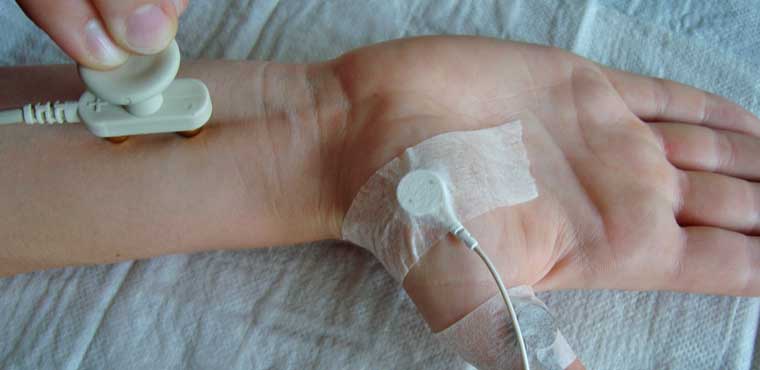Peripheral Nerve Stimulation (PNS) is a Unique Treatment Option for Those that Suffer from Chronic or Refractory Pain
Its use differs from spinal cord stimulation (SCS) in that it is more specific and is usually implanted along a single nerve in one of the limbs rather than inside the spine itself. PNS may be offered in cases where SCS is not ideal. For instance, where it is difficult to access the spinal anatomy due to deformity or previous surgery, or in certain health conditions especially those that require chronic anticoagulation. PNS may be preferred over SCS in cases such as direct trauma to a peripheral nerve or in complex regional pain syndrome (CRPS) causing focal limb pain.

Peripheral nerve stimulation involves percutaneously placing a wire-like electrode internally along one of the peripheral nerves using specialized needles and other equipment under direct imaging either X-ray or ultrasound. The electrode transmits rapid electrical pulses that may produce a tingling sensation or ,in medical terms, paresthesia. The paresthesia is meant to interrupt the sensation of pain and replace it with a more pleasant sensation and therefore relieving pain.
Several Options of PNS are Available
Some may be placed temporarily up to 60 days, while others are meant to stay implanted permanently. All have some type of generator (or battery) that delivers the electrical impulses. Some generators are implanted internally (under the skin) and operated by remote control. Others have an external generator which can be placed on top of the skin, overlaying the internal wire, and transmit the energy through the skin.
PNS is used in both musculoskeletal and non-musculoskeletal conditions. Common uses for PNS in musculoskeletal medicine are related to direct nerve trauma, whether sustained through injury, post-illness or perhaps surgically. Common musculoskeletal indications include chronic shoulder pain despite rotator cuff repair, chronic shoulder pain after stroke (post-CVA), ongoing knee pain despite knee replacement (arthroplasty), CRPS (Complex Regional Pain Syndrome, Type I or II), pain post-carpal tunnel release, lateral femoral cutaneous neuralgia (meralgia paresthetica), foot or ankle pain (tibial nerve). There are also many non-musculoskeletal uses for PNS including post-herpetic neuralgia, and pain post-inguinal hernia repair, amongst other conditions.

